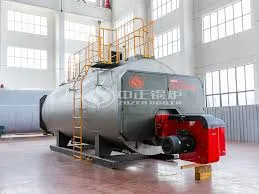Jul . 31, 2024 23:56 Back to list
Global Exporters in Metal Casting Industry Driving Innovation and Growth Worldwide
The Global Landscape of Metal Casting Exporters
Metal casting is a pivotal process in the manufacturing sector, serving as the backbone for producing a multitude of components used in various industries, from automotive to aerospace, construction to consumer goods. As economies grow and industries evolve, the demand for high-quality metal castings continues to rise, making metal casting exporters increasingly significant in the global market.
Understanding Metal Casting
Metal casting is a manufacturing process in which molten metal is poured into a mold to create a specific shape. This process can be performed using various methods, including sand casting, investment casting, and die casting, each with its unique advantages and applications. The choice of casting technique often depends on the complexity, volume, and material requirements of the products being manufactured.
The Role of Exporters in Metal Casting
Metal casting exporters play a crucial role in global trade by supplying cast components to manufacturers who may not have in-house capabilities or require specific expertise. Countries known for their advanced metal casting techniques, such as China, India, the United States, and Germany, lead the way in the production of cast metal products. These exporters often engage in the complete supply chain process—ranging from mold design and metal alloy selection to the final casting and quality control.
Exporters typically cater to various industries, including automotive, aerospace, and energy. The automotive sector, for example, is one of the largest consumers of cast parts, utilizing components such as engine blocks, transmission cases, and suspension parts. With the rise of electric vehicles (EVs), the demand for lightweight materials and improved designs has also influenced casting techniques and materials, leading to increased export opportunities for specialized casting manufacturers.
Trends Influencing Metal Casting Exports
metal casting exporters

Several trends are shaping the future of metal casting exports. One significant factor is the push for sustainability within the manufacturing sector. Many exporters are adopting eco-friendly practices by using recycled materials, reducing energy consumption in foundries, and developing casting methods that minimize waste. This shift is not only beneficial for the environment but also appeals to consumers and businesses seeking to align with sustainable practices.
Technological advancements, such as automation, 3D printing, and simulation software, are further transforming metal casting processes. These innovations enhance efficiency, reduce production time, and enable more complex designs, making it easier for exporters to meet the varied demands of global clients. The adoption of Industry 4.0 technologies also enables real-time monitoring and data analytics, improving overall production quality and responsiveness to market needs.
Challenges Faced by Exporters
Despite the promising landscape, metal casting exporters face several challenges. Fluctuating raw material prices, supply chain disruptions, and increasing labor costs can significantly impact production costs and ultimately, profit margins. Additionally, stringent global quality standards and compliance regulations require exporters to continuously invest in quality assurance processes and certifications, adding to operational burdens.
Geopolitical tensions and trade policies also play a vital role in shaping the metal casting export market. Tariffs, quotas, and trade agreements can affect the competitiveness of exporters in different regions, necessitating adaptability and strategic planning to navigate these complexities.
Conclusion
The metal casting export sector is a vital component of the global manufacturing landscape, driven by technological advancements and a growing emphasis on sustainability. As industries continue to evolve, metal casting exporters will need to adapt to changing market dynamics while ensuring high-quality production and compliance with international standards. By addressing current challenges and embracing innovation, these exporters can further solidify their position in the global marketplace and contribute to the continuing evolution of manufacturing processes across the globe.
-
Centrifugally Cast Iron Water Main Pipe for Reliable Mains
NewsAug.22,2025
-
Durable Centrifugally Cast Iron Water Main Pipe
NewsAug.11,2025
-
Centrifugally Cast Iron Water Main Pipes for Reliability
NewsAug.10,2025
-
High-Quality Centrifugally Cast Iron Water Main Pipes
NewsAug.09,2025
-
Durable Cast Iron Water Main Pipe & Drainage Solutions
NewsAug.08,2025
-
Buy Cast Iron Pipe: Premium Ductile Iron & Drain Solutions
NewsAug.07,2025


